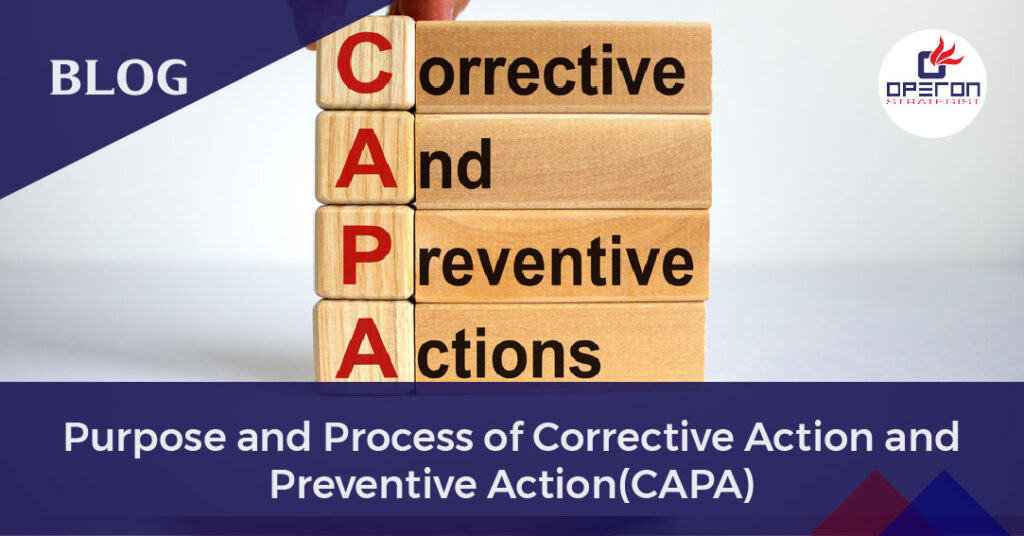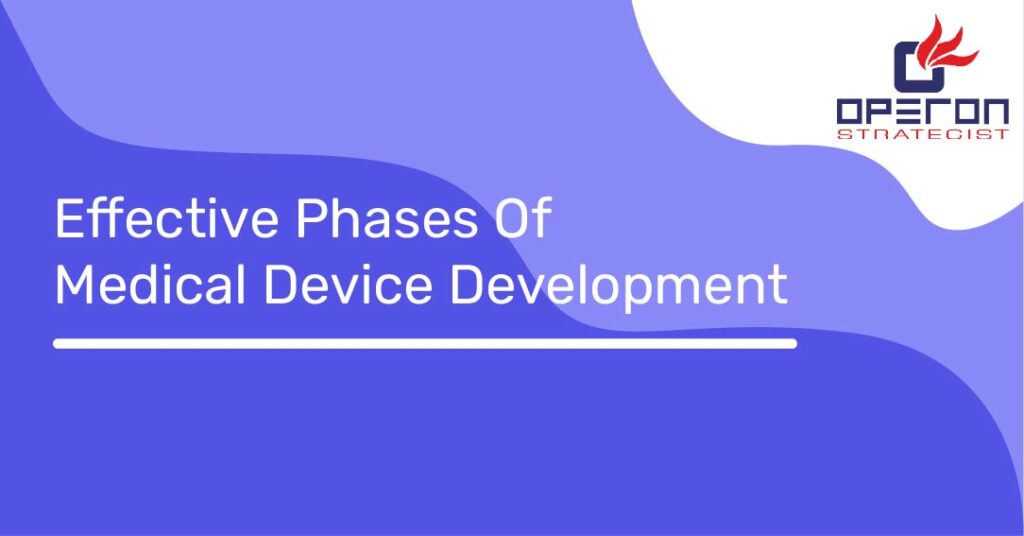CAPA is an acronym for Corrective and Preventive Action. The CAPA process is one of the core cycles in every medical device organization’s quality management system. The FDA requires medical device organizations to break out quality review reports, work activities, returned goods, administration records, concessions, and processes, and investigate the underlying cause of non-conforming devices. Our team of Operon strategists assists our clients in managing CAPA documentation; CAPA generates a large amount of paperwork, including information from processes, work tasks, quality review reports, client complaints, and administration records, meeting notes, CAPA structures, main driver examination archives, and more. As you investigate possible CAPA opportunities, our team keeps materials organized, and open for endorsement, and conducts surveys.
- Operon Strategist is an ISO 13485 Medical Device Consultant who helps to create the documents for ISO 13485 certification.
Likewise with every quality cycle, laying out and reporting arrangements and systems early and frequently is the most ideal way to remain coordinated and successfully carry out the CAPA interaction at your association
Looking For a Medical Device Regulatory Consultant?
Let’s have a word about your next project
What Should Trigger A CAPA?
CAPA is nothing but Corrective and preventive action.
Definitions: –
- Correction: Action to eliminate a detected nonconformity.
- Corrective action: Action to eliminate the cause of nonconformity and to prevent a recurrence.
- Preventive action: Action to eliminate the cause of potential nonconformities to prevent their occurrence.
The action taken by the manufacturer in the case of but not limited to Product-related Nonconformity, Process Nonconformity, or other Nonconformities observed in the Audits or Complaints received, etc. Taking a CAPA is challenging for a medical device manufacturer. Because of an non-effective CAPA list of reasons for 483 observation/ warning letters from the FDA, Non-conformities in the audits, and many companies struggle to identify when they should even initiate a CAPA.
Purpose of the CAPA?
The CAPA method is simply an inquiry of systemic quality issues, such as a component that fails inspections regularly during manufacturing. Keep this in mind as we go more into the many circumstances that can cause a CAPA. Before beginning the real procedure, determine which activities necessitate a CAPA.
Non-conformance: Non-conformance (also known as nonconformity or nonconformance) occurs when something goes wrong with a process, service, or product, and the end result does not meet the original standards.
There are several sorts of non-conformances, including product-related, process-related, and non-conformity detected during the audit. However, not all nonconformances will result in a CAPA. A non-conformance triggers a procedure that includes regulating the nonconforming product and investigating the cause of the problem as well as the likelihood that it will occur again, akin to a CAPA.
Complaints: According to FDA definition, a complaint is any communication that asserts flaws in a product after it has been placed on the market.
As with non-conformance, complaints necessitate an investigative process to identify the issue or reason of complaint. A single complaint, like a nonconformance, is unlikely to cause a CAPA. Again, you’re looking for signs of a systematic issue, such as several complaints about the same problem with your product. Because of the gravity of the situation, a CAPA may be triggered by an unfavorable incident or complaints involving patient injury.
Audit Non-conformities: Both internal and external audits may reveal issues that must be rectified. However, if these issues exist, your goal should be to identify them during internal audits so that they may be addressed before the ISO/CE audit and FDA inspection.
Non-conformities and observations discovered during the audit (both internal and external) must be addressed immediately. Before requesting a CAPA, you must first evaluate whether the issues discovered during internal audits are widespread. To be thorough, medical device manufacturers would typically escalate each complaint to CAPA while conducting an internal audit. However, in most circumstances, it is not required. While a CAPA can arise from any aspect of your QMS that shows a systemic quality issue, there are a few key places that frequently cause a CAPA.
CAPA Process
Identify the Problem (Issue Detection): The process begins with identifying or detecting an issue, which could be a customer complaint, internal audit finding, non-conformance report, or any other indication that there is a problem or potential problem.
Investigation (Root Cause Analysis): Once the problem is identified, a thorough investigation is conducted to determine the root cause or causes of the issue. This step aims to understand why the problem occurred in the first place to prevent recurrence.
Reviewing (Impact Assessment): The next step involves assessing the impact or potential impact of the issue on products, processes, systems, or compliance requirements. This helps in prioritizing corrective and preventive actions.
Resolve Errors (Corrective Action): Corrective actions are developed and implemented to address the identified root cause(s) of the problem. These actions are specific steps taken to eliminate the cause of a detected non-conformity or other undesirable situation.
Implementation (Preventive Action): Preventive actions are measures implemented to prevent the occurrence or recurrence of the identified problem. Unlike corrective actions, which react to an issue that has already occurred, preventive actions are proactive measures to mitigate potential future issues.
Review Performance (Effectiveness Verification): After implementing corrective and preventive actions, the effectiveness of these actions is verified through monitoring and evaluating the outcomes. This step ensures that the actions taken have resolved the issue and prevented its recurrence.
CAPA is significant for medical device organization for global administrative consistency, cost reserve funds, proficiency, and marking, among other reasons. operon strategist medical device consultancy provides end-to-end solutions and regulatory guidance for medical device manufacturers.
Operon Strategist has collaborated closely with various regulatory agencies. Specializing in CE mark medical device certification consulting, we possess expertise in product classification and FDA Certification, CDSCO Certification ensuring a seamless certification process devoid of errors. Contact us today or message us on WhatsApp to avail our services and discuss your requirements
- adminhttps://operonstrategist.com/author/admin-2/
- adminhttps://operonstrategist.com/author/admin-2/
- adminhttps://operonstrategist.com/author/admin-2/
- adminhttps://operonstrategist.com/author/admin-2/




